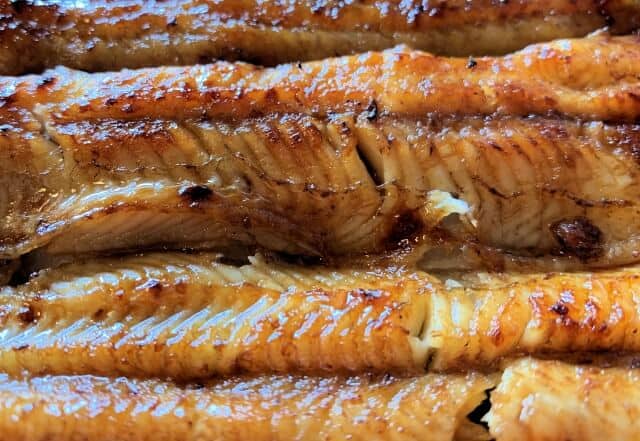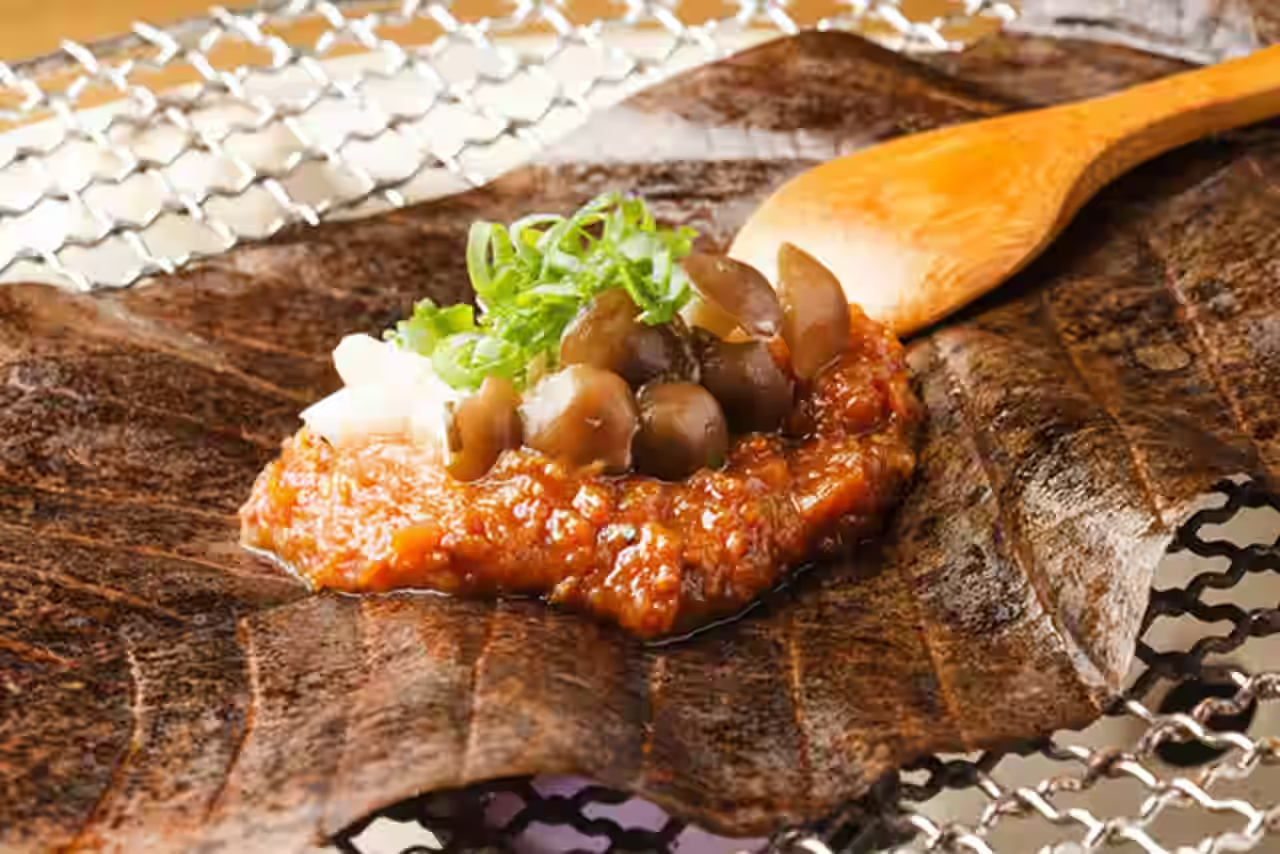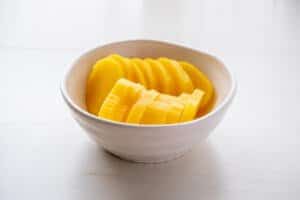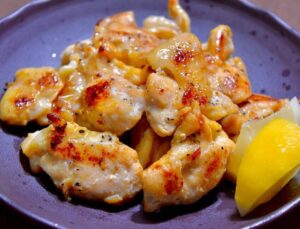For hundreds of years, Unagi has been popular not only in Japan but also all over the world as a healthy and luxurious dish. However, do you wonder what makes this dish so expensive? Today, we would like to introduce about Unagi no Kabayaki – its history, recipes and restaurants to find delicious kabayaki.
What is Unagi no Kabayaki?
Unagi no Kabayaki (うなぎのかば焼き) is a traditional Japanese dish consisting of a split-down Unagi eel around its back (or belly). Locals either gutted and boned, butterflied or cut it into rectangle fillets. Then, they will skewer and grill it over a direct flame without using oil. You can dip it in a thick sweet “Tare” sauce made from dark soy sauce, mirin, sugar, and sake, and further cook it over the fire. It’s a type of teriyaki and one of the Edo dishes, as well as a classic Edo local dish. It also refers to kabayaki-style goods that have the same flavor and appearance as kabayaki and are not prepared in the same way (such as roasted chicken kabayaki).
What is Kabayaki?

During the early Edo period’s Genroku era, the Japanese developed a cooking method in which they can open, pierce on skewers, and roast the eel while removing the fat. The appearance of eel ears fades when you open it and set it on a skewer, but the name “eel kabayaki” has stuck. Kabayaki is the modern name for the cooking procedure of opening elongated fish, skewering, and teriyaki while applying sauce.
Kabayaki is a popular way to cook fish and refers to one method of grilling. Japanese gutted, boned, and butterflied the eel before being marinated in soy sauce, sake, sugar, and other seasonings before being cooked for kabayaki. Shiroyaki, Unaju, Unadon, Hitsumabushi, Unagi Chazuke kabayaki dishes are some examples of the popular Kabayaki dishes.
Etymology

Unagi no Kabayaki has a literal translation of “Grilled Eel” in English. It is widely believed that the term “kabayaki” was derived from the fact that the way eel is grilled on skewers was similar to the ear of the Gamayaki or the Japanese word for “cattail”. And so, it changed to ‘gamayaki (がま焼き)’ to ‘kabayaki (かば焼き)’
Unagi no Kabayaki History

Around Neolithic time, eels first emerged in Japanese cuisine. Eels have been cooked from prehistoric times, according to some of the fish bones found in ruins from that period, but the cooking procedure is unknown. According to the literature, eel kabayaki existed in 1399, however, their ancestors chopped the eel into cylinders and stabbed it on skewers at the time, and it resembled the perennial plant “Kabayaki.” They sliced it into cylinders and baked and ate with salt, vinegar, miso, mustard vinegar, and other condiments throughout the Muromachi period. But by the end of the period, it appears that many seasoned it with soy sauce, sake, and sansho miso.
People didn’t start eating it open like they do now until the Edo era, and it appears that they used soy sauce and mirin-based sauce. Unagi no kabayaki became a pandemic during the Edo period, and it was sold as a frequent dish at stalls as well as restaurants and set meal stores. There was also a “Edomae Daikabayaki” ranking table in 1852 with 221 Edo eel restaurants.
Unagi no Kabayaki Recipe

Unagi no Kabayaki Ingredients
| Ingredients of Unagi no Kabayaki for 1 person | |
| Raw open eel | 80g |
| Soy sauce | 20g |
| Sweet sake | 10g |
| Liquor | 20g |
| Sugar | 14g |
How to make Unagi no Kabayaki
Divide the raw open eel into 3 or 4 equal parts then cut its head.
Bake on high heat from the skin on a fish grill and bake the head as well. Then, if you see that it is cook to the extent that it is not burn, bake about 80% of the back and body.
Put all the sauce in a pan and heat it. At this time, you can also add the sauce that comes with the product on the market. Be sure to boil the head and baked it again together.
Reduce the heat of the sauce to low and boil about 80% of the grilled eel. Boil for 3-5 minutes and bake again on low heat on both sides.
Put it in a pan with the heat off and then put it on and it’s done. When the sauce has cooled, you can put it in a bottle and store it in the refrigerator.
Many recommended keeping it in the pot until the evening when you make it. Strain and store in a bottle that you can sterilize by boiling with kitchen paper.
Difference between Kanto and Kansai

In Kanto and Kansai, unagi no kabayaki is prepared differently. Eels are opened on the back and grilled in white before being steamed in the Kanto region, whereas they open the eels on the back and grilled without steaming in the Kansai region. It is tender and easy to consume since they steam it in the Kanto cooking style, which removes extra fat. However, locals baked it without steaming in the Kansai cooking method, making it fatty, chewy, and tasty.
Unaju vs Unadon vs Unagi Kabayaki

Japanese often serve Unagi Kabayaki over rice. The grilled eel topping itself is the “Unagi no Kabayaki (鰻の蒲焼)“. The dish is titled “unaju” (unagi + jubako) when served in a square lacquerware bowl called a “jubako”. If it is “unadon” (unagi + donburi), they serve it in a deep round bowl (called a “donburi” in Japanese). Unaju, on the other hand, is generally higher in grade and more expensive than Unadon. Unaju makes use of more unagi than Unadon.
Season of eating Unagi no Kabayaki

Unagi is served year-round; however, it is especially popular during the summer months due to ingredients thought to increase stamina and heat tolerance. A popular custom from the Edo period calls for eating kabayaki during the summer to gain stamina. Especially on a particular mid-summer day called doyō-no ushi-no-hi (土用の丑の日), which can fall anywhere between July 18 – August 8 each year.
Where to buy Unagi no Kabayaki
Funaya (舟屋)

This shop uses only domestic eels, and we are particular about choosing the most delicious eels at that time, such as Aichi, Shizuoka, and Mie prefectures. Therefore, the body is very soft with a moderate amount of fat, and the skin is fragrant. And the secret sauce has the richness of 80 years of umami.
Kabuto (かぶと)

Kabuto in Ikebukuro is famous as the best eel restaurant in Japan where you can’t make reservations. We recommend the owner’s entrusted course. You can eat the most delicious menu at that time, such as the Kanto style that they serve with the eel’s body plumply. And also the Kansai style that has a crisp aroma, the eel’s heart and fins, and the eel dishes that use big eels and tails.
Kanerin Unagi store (かねりん鰻店)

“Kanerin Unagi Store” in Hamamatsu City, Shizuoka Prefecture is a long-established store with a history and tradition of 60 years. The special eel dish has a lot of umami because the surface is covered with sauce to trap the umami and carefully baked with Bincho charcoal. In addition, the price is a little reasonable compared to ordinary eel shops.
Sueyoshi Unagi (うなぎの末よし)

Kagoshima Prefecture has the highest production of farmed eel in Japan. The long-established eel restaurant that many loved in Kagoshima prefecture for a long time is “Unagi no Sueyoshi”. Their authentic kabayaki, which is made by soaking local Okuma eel in a secret sauce and grilling it over charcoal, is exquisite. You will surely be convince that there are many fans among the locals.
Takeaway

A recipe hailing from Japan, Unagi Kabayaki is a preparation of freshwater eel with a rich history. Sushi masters and chefs have traditionally spent years, if not decades, honing Unagi Kabayaki techniques as part of their profession.” Unagi can be prepared in a variety of ways, but the most popular is kabayaki, which involves grilling unagi fillets and basting them in a savory-sweet sauce.
If you are a Japanese eel dish lover, you can try their Unadon, Unajyu, and Hitsumabushi.
















Comments